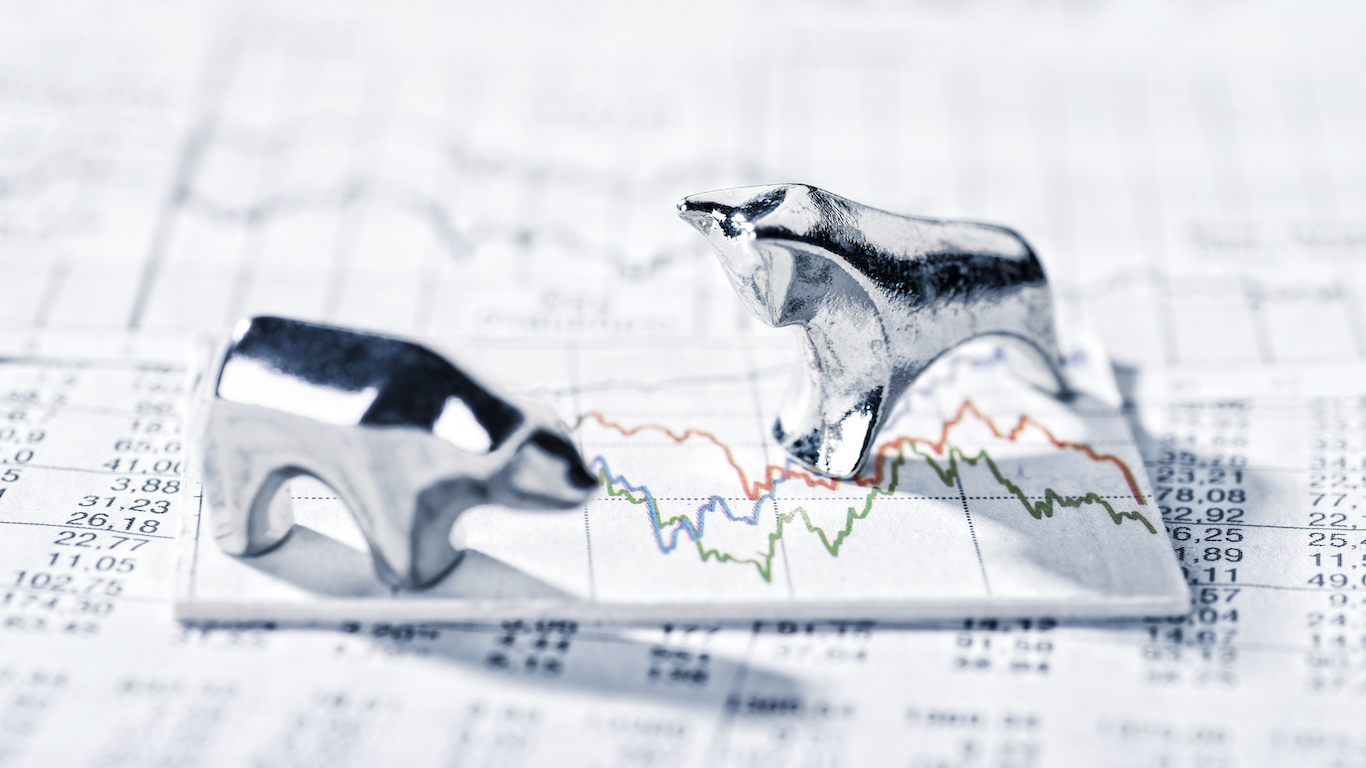Economy
Strong 3.2% GDP Growth in Q1 Creates Confusion for Bulls and Bears Alike

Published:
Last Updated:

The economy is running much hotter than economists, investors and Federal Reserve officials would have guessed. Real gross domestic product (GDP) rose by an annualized rate of 3.2% during the first quarter of 2019. That figure handily beat the 2.5% consensus published by The Wall Street Journal and was even stronger than the Econoday estimate of 2.3%.
This was the first estimate released by the U.S. Department of Commerce and it will receive two subsequent revisions. Real GDP in the fourth quarter of 2018 was only up by 2.2%. Current-dollar GDP gained an even stronger 3.8% ($197.6 billion) to a level of $21.06 trillion in the first quarter. That compares with a gain of 4.1% ($206.9 billion) in the fourth quarter of 2018.
There are some caveats to this GDP report that have helped to boost the numbers, but the report also creates some serious confusion for bulls and bears alike.
The GDP price index increased by only 0.8% in the first quarter of 2019, down from a 1.7% gain in the fourth quarter of 2018. The personal consumption expenditures (PCE) price index increased by just 0.6% in the first quarter, versus an increase of 1.5% in the fourth quarter. Excluding food and energy prices, the PCE price index rose by 1.3%, but that is still down from the fourth quarter’s gain of 1.8%.
According to the Commerce Department, the stronger-than-expected gain in real GDP was boosted by stronger personal consumption expenditures, private inventory investment, exports, state and local government spending and nonresidential fixed investment. The Commerce Department noted that imports, which act as a subtraction against GDP, actually decreased. Also worth noting was that the positive contributions were partly offset by a drop in residential investment.
While the global economy has been slowing, a report this strong would lend some credibility that the fears of a domestic slowdown will at least be postponed. It is also going to thwart a lot of those “recession is imminent fears.”
Before looking at the glass as “only full,” it is important to consider that one full percentage point of the first quarter’s growth was due to the rise in net exports. That is a from lower trade deficit due to lower imports, but it is more than fair to ask how much of that can be sustained in the quarters ahead, if and when trade policies are worked out with China and other nations.
The first-quarter GDP report also showed a breakdown of the personal income in current dollars, the disposable personal income and personal savings rate. These were shown as follows:
- Current-dollar personal income increased $147.2 billion in the first quarter, compared with an increase of $229.0 billion in the fourth quarter. The deceleration reflected downturns in personal interest income, personal dividend income, and proprietors’ income that were partly offset by an acceleration in personal current transfer receipts.
- Disposable personal income increased $116.0 billion, or 3.0 percent, in the first quarter, compared with an increase of $222.9 billion, or 5.8 percent, in the fourth quarter. Real disposable personal income increased 2.4 percent, compared with an increase of 4.3 percent.
- Personal saving was $1.11 trillion in the first quarter, compared with $1.07 trillion in the fourth quarter. The personal saving rate — personal saving as a percentage of disposable personal income — was 7.0 percent in the first quarter, compared with 6.8 percent in the fourth quarter.
This is one of those reports that is likely to confound many of the financial market pundits, and it is going to act as a confusion for the market’s skeptics and bulls alike. Imagine if you were sitting there on December 25 over the worst Christmas stock market meltdown in recent history and being given an envelope that had a card in it saying “Don’t worry about the small stuff, Q1 2019 GDP will be up 3.2%.” Almost everyone would crumble it up, have one of those doubtful chuckles and probably go lament about the market and the economy.
On a more serious note, the Federal Reserve’s most recent stance has been that it finally needed to stop tightening interest rates and to take a more dovish stance. The Fed also pledged that it was going to be out of the rate-hiking business for the rest of 2019, with maybe only one hike expected by Fed forecasters in 2020. Now imagine being Fed Chair Jerome Powell and seeing a 3.2% gain in GDP with a very low contribution from the price index. Will this report quell some of the hopes that the Federal Reserve actually may have to start cutting interest rates in the not-so-distant future?
Stock futures had been marginally higher ahead of the report, but after the opening bell the Dow was down 30 points and the S&P 500 was down 4.5 points. The yield on the 10-year Treasury was last seen at 2.505%, which is equally confusing because that is down about three basis points from the prior day.
Thank you for reading! Have some feedback for us?
Contact the 24/7 Wall St. editorial team.